“You won’t need gaiters. We don’t have any snakes here.”
Stunned, we all gaped at the customs officer. Was he pulling our leg?
“That’s right,” he said in his Kiwi accent, checking our hiking boots and gear for unwelcome Aussie mud. Excellent. The land of Lord of the Rings, the All Blacks, hilarious tourism ads, the world’s most spectacular scenery and pavlova (the latter being hotly contested, of course), now had yet another one-up on Australia.
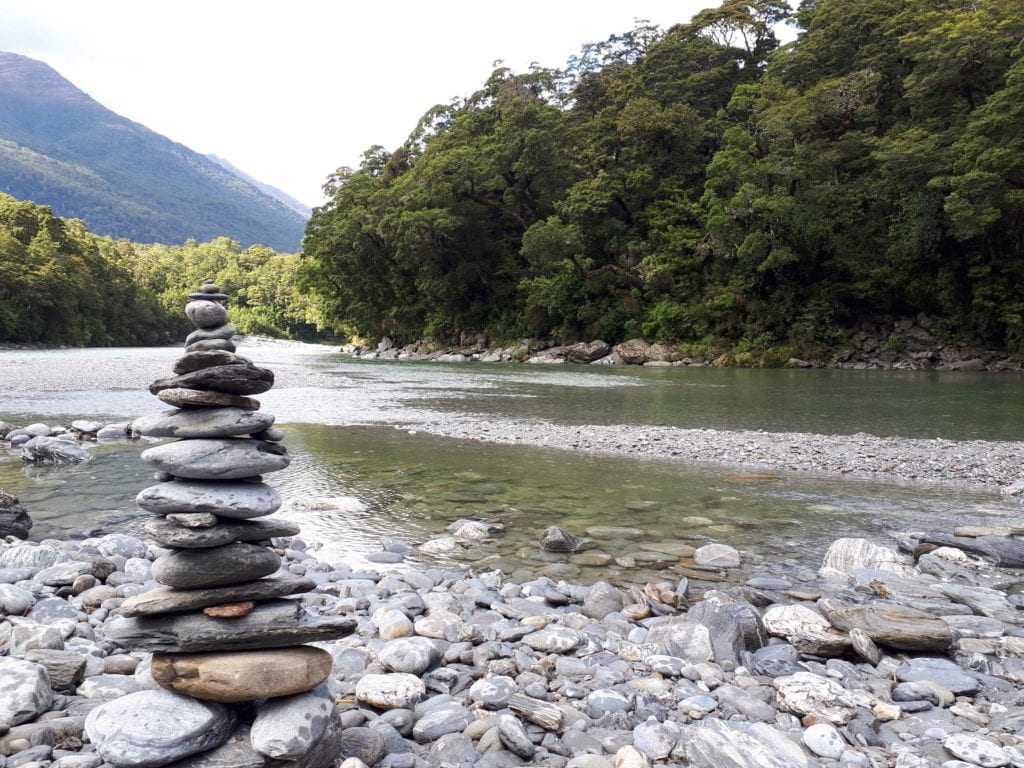
We had just arrived in Queenstown airport, already awestruck by the mountain backdrop of our landing. This was to be the theme of the rest of our family holiday in New Zealand’s South Island. We couldn’t believe the mountains and lakes at every bend in the road, nor the exploding foodie culture, range of adventure sports and patient, in-depth approach to local history.
READ MORE: Thrills and spills in Queenstown
We road-tripped in a caravan as a family of five adults; myself, my parents and my 17 and 19-year-old brothers. But the variety of South Island destinations on offer caters to families of all sizes, ages, budgets and travel styles.
Snake-free and spectacular, these are my top 10 South Island destinations for any family.
The Natural Wonders
The Glaciers
The twin glaciers of Fox and Franz Josef eagerly await exploration on the West Coast. You can view the terminal faces of both from afar even on foot. Franz Josef in particular has a flat 1.5-hour loop track. Alternatively, you can splurge on a professionally guided tour that takes you onto the ice, or a scenic helicopter flight to where the glaciers begin. These natural phenomena are simply breathtaking. The retreat of the glaciers is also a harrowing indication of the irreversible impacts of climate change.
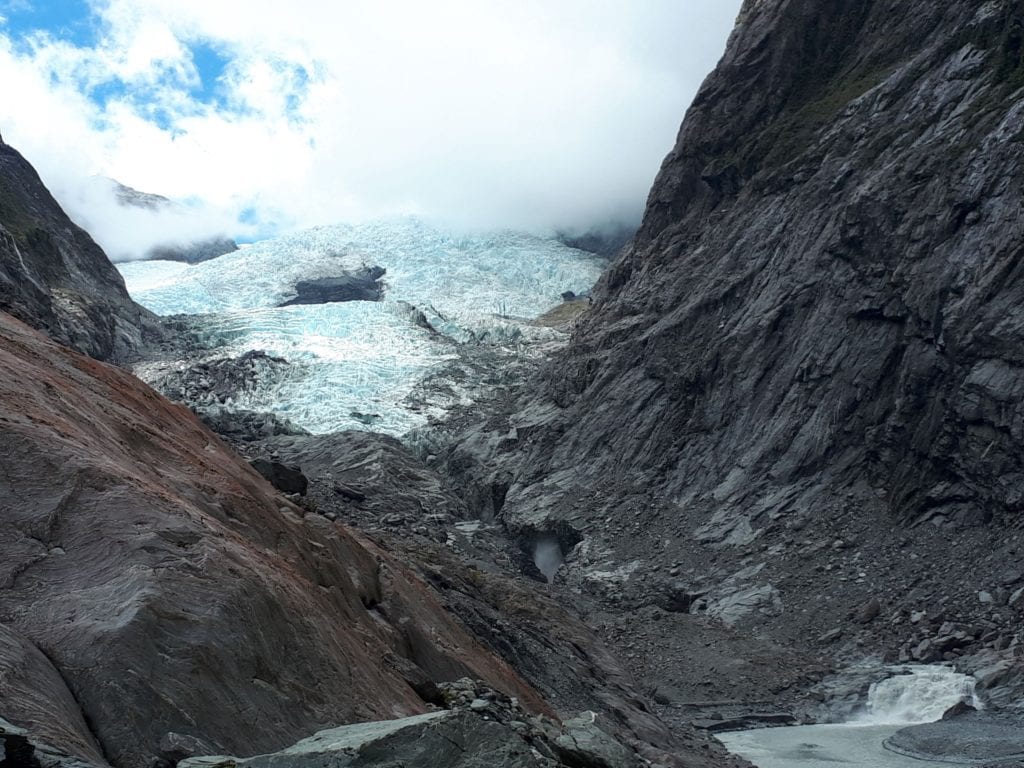
Aoraki/Mount Cook
In fact, the largest glacier in New Zealand is actually the Tasman. It is found at the base of Mount Cook, which happens to be the tallest mountain in the country. With so many ‘biggests’ and ‘bests’ in the one national park, it is little wonder that Aoraki/Mount Cook was one of my favourite South Island destinations. The scenery is unparalleled. With kids, I recommend the Hooker Valley track because it is flat, low-grade and scenic. It leads you across several bridges to the iceberg-filled Hooker Lake beneath Mount Cook. The Aoraki Mount Cook National Park is also listed as a Dark Sky Reserve, making it a prime stargazing location on clear nights.
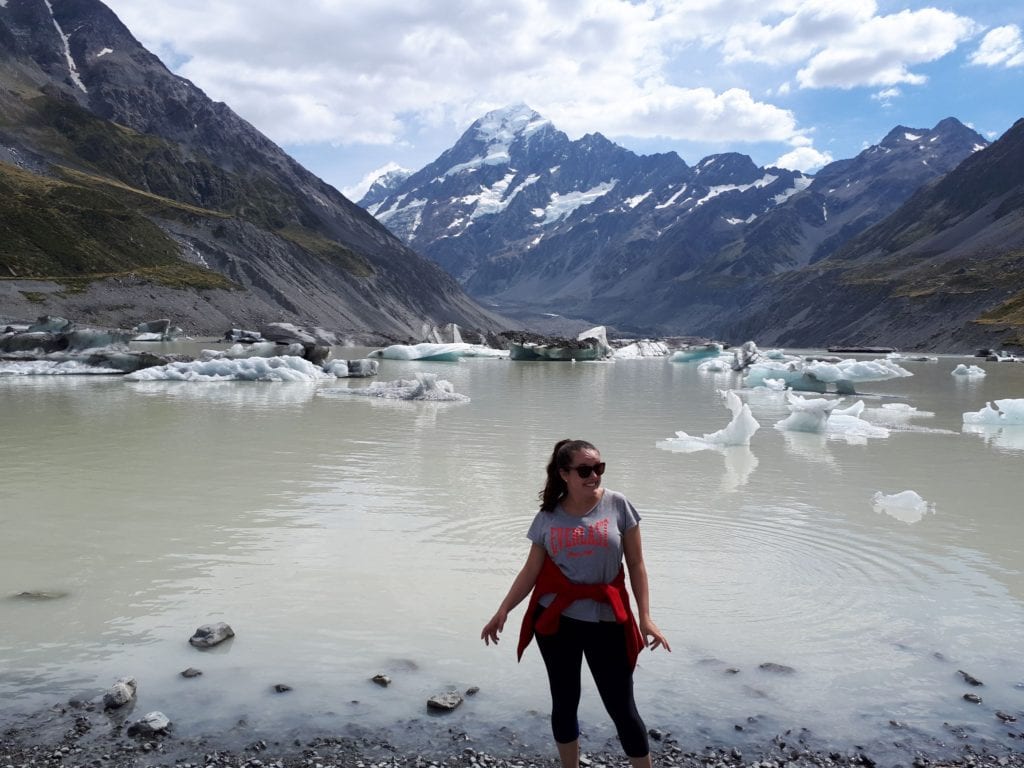
Lake Tekapo
The glacial blue of rivers and lakes on the South Island continued to amaze me even after a good fortnight in New Zealand. Famous Lake Tekapo is no exception. The quaint stone building of the Church of the Good Shepherd makes a great photo op, although busloads of tourists will have the same idea. Time it right and you’ll see the lake adorned with wildflowers.
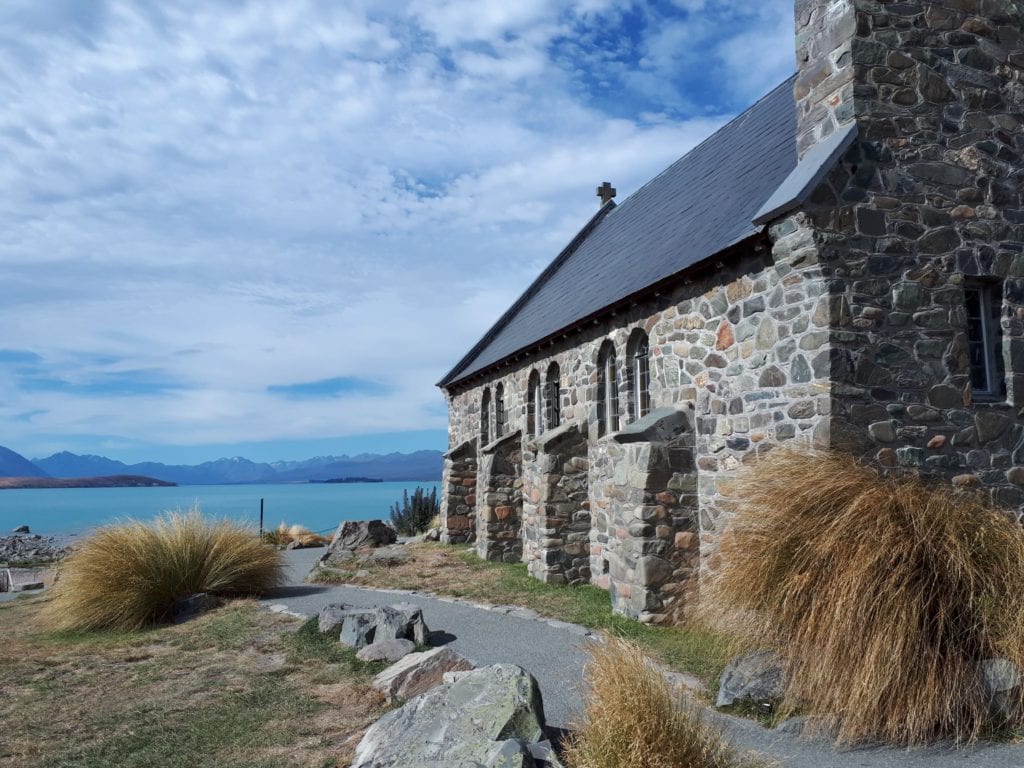
Skip the crowds and opt instead for Tekapo’s remarkable neighbour, Lake Pukaki. In fact, I preferred this larger lake. We parked our campervan here overnight and enjoyed a refreshing swim and dinner with a view.
Moeraki Boulders
Resembling an enormous game of marbles, or submerged tortoise shells, these spherical boulders lie scattered on beautiful Koekohe Beach on the Otago coast. Maori legend says that the boulders are large gourds and eel baskets brought to shore after the wreckage of sailing canoe Araiteuru. Speaking from experience, they are best paired with takeaway fish and chips.
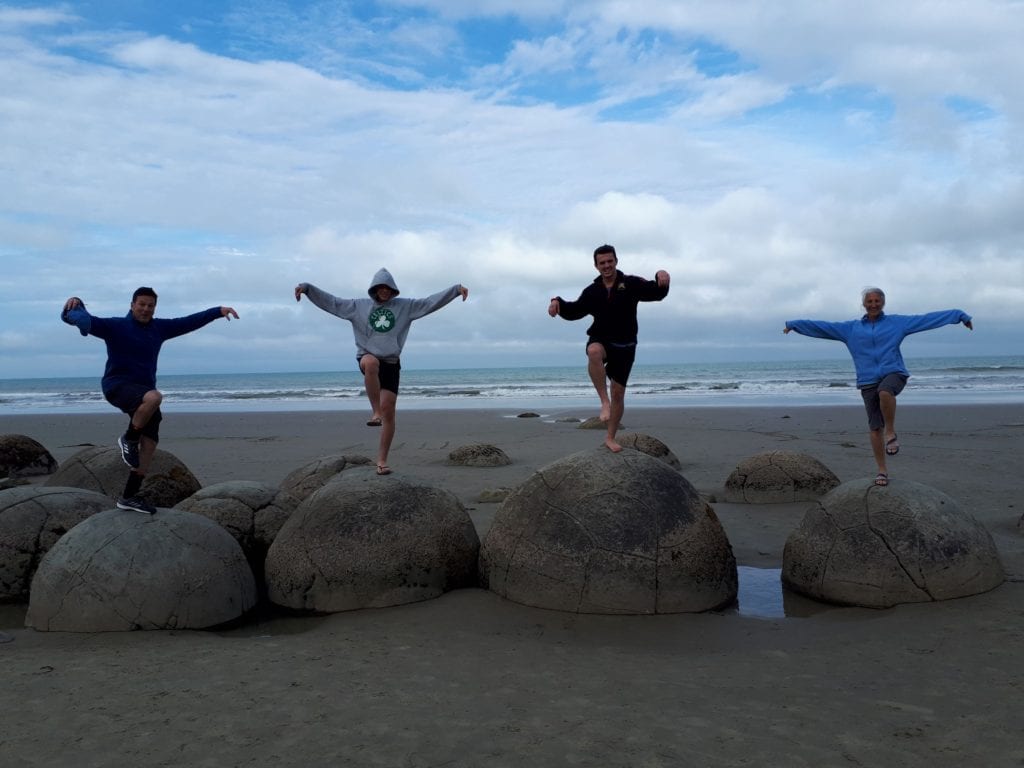
Fiordland National Park
Home of the mighty Milford Sound, Fiordland National Park is a must-do on your itinerary. There are lots of modes of exploration. Embark on a four-day hike (or should we say, tramp) along the Milford Track, one of New Zealand’s Great Walks. Marvel at the beech forest, Clinton River, Mackinnon Pass and Sutherland Falls. Bookings are required for use of huts from late October to late April.
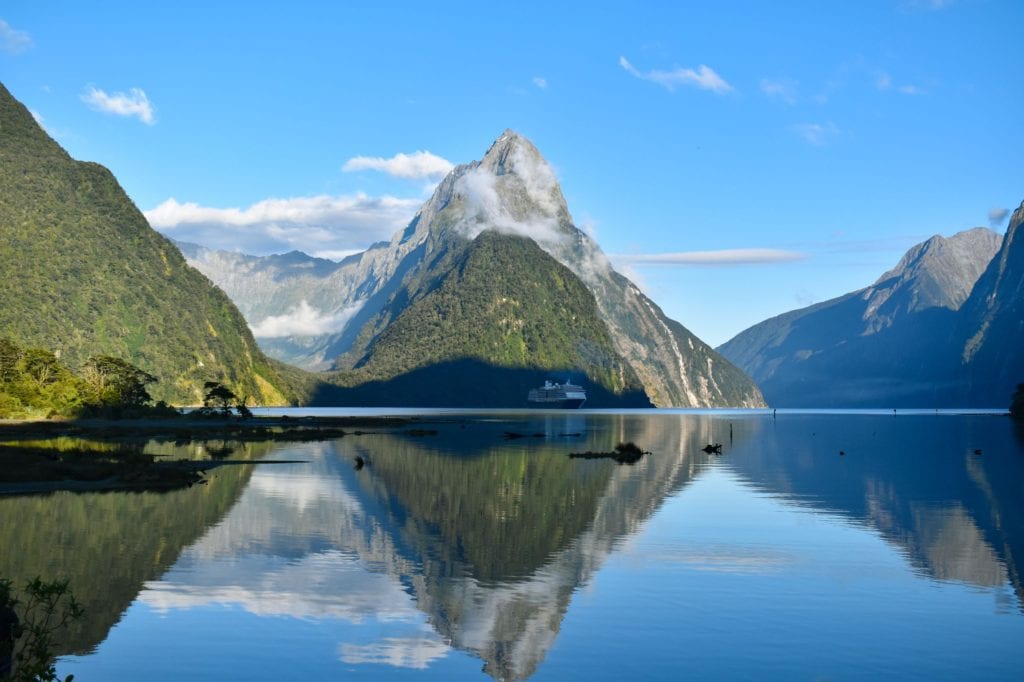
Having just conquered the Hump Ridge track, my family sought a gentler option. We boarded a scenic breakfast cruise. Morning is the perfect time for a peaceful visit before the crowds descend.
I hear Doubtful and Dusky Sounds are equally if not more impressive, and generally more quiet.
Abel Tasman National Park
Unfortunately, we didn’t make it as far north as Abel Tasman National Park. I was sorely disappointed. Photos of the region show off its lush rainforest, golden beaches and brilliant blue waters. It is the perfect spot for older families who like going remote and getting active.
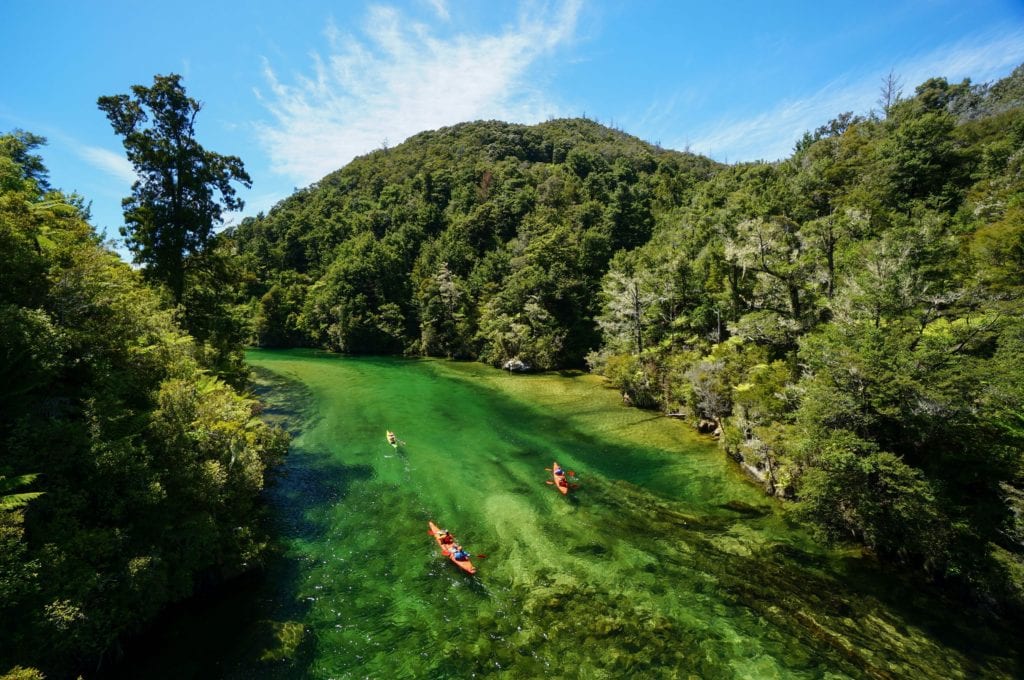
The five-day Abel Tasman Coastal Track is apparently one of the most easy-going of the major New Zealand hikes. Lots of families say it is definitely do-able with kids in tow, especially if you take it section by section using water taxis and kayaks. You’ll need to bring all gear with you.
Otherwise, take a kayaking day trip out to Adele and Fisherman islands, or mountain bike sections of the Moa Park and Gibbs Hill tracks.
The Towns
Queenstown
It might be known as the adventure capital of the southern hemisphere, but Queenstown is more than its bungees, ski slopes and river rapids. We passed a yoga meeting in the park. A man with dreadlocks played the piano beautifully on a side street. I may or may not have spotted Aussie radio and TV comedian Hamish Blake at the lakeside and wimped out of asking for a photo. Regrets.
We visited in summer, but even in the gentle sun, Queenstown felt like a quaint alpine ski town. Foodies will love the cosy cafes, restaurants and bars. We watched truffles being made as we ate ice-cream at Patagonia Chocolate Factory. We chose not to brave the queue, but heard through the grapevine of the legendary Fergburger.
Take the Skyline Gondola up Bob’s Peak to test your courage on the zipline, luge, bike track and walking trails. The Skyline complex is wheelchair-accessible. Even if adrenaline isn’t for you, it is worth taking the trip for the astonishing views (ahem, jelly bean shop). You can see Coronet Peak, the aptly-named Remarkables mountain range and Lake Wakatipu. Maori legend has it that the rise and fall of its waters are caused by the beating heart of the giant Matau.
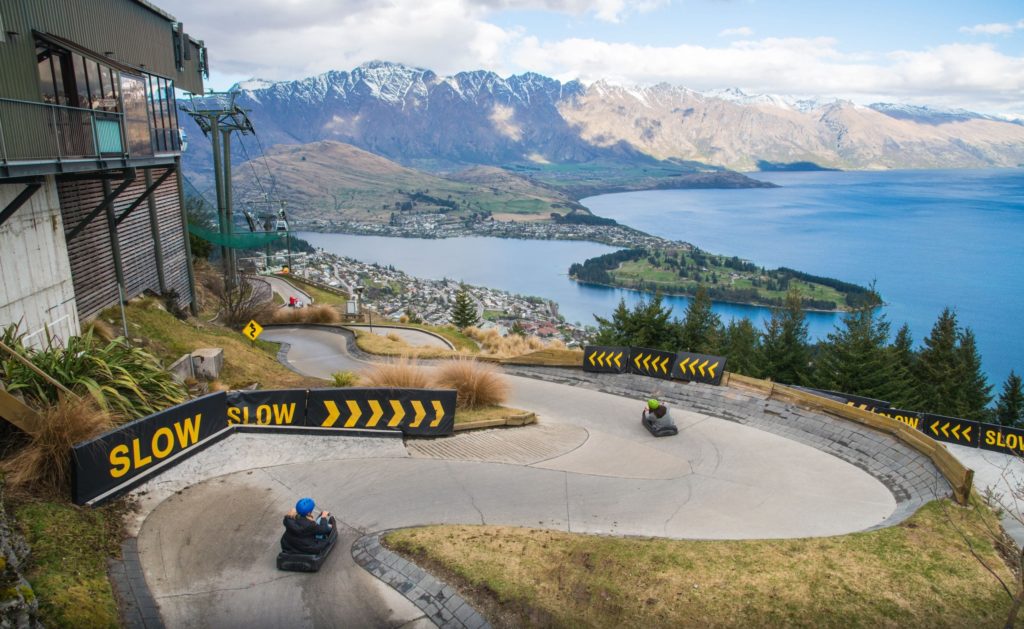
The fearless (or crazy?) can catch a shuttle out of town in order to hurtle themselves off various heights. My brothers wanted to try the notorious Nevis swing, but due to high winds, ended up jumping Assassins Creed-style off Kawarau Bridge with AJ Hackett Bungy. I piked out and went ziplining on Bob’s Peak instead, which I would recommend for active primary schoolers. Other adventure sports in Queenstown include skydiving, whitewater rafting, river surfing, jet boating, caving and canyoning.
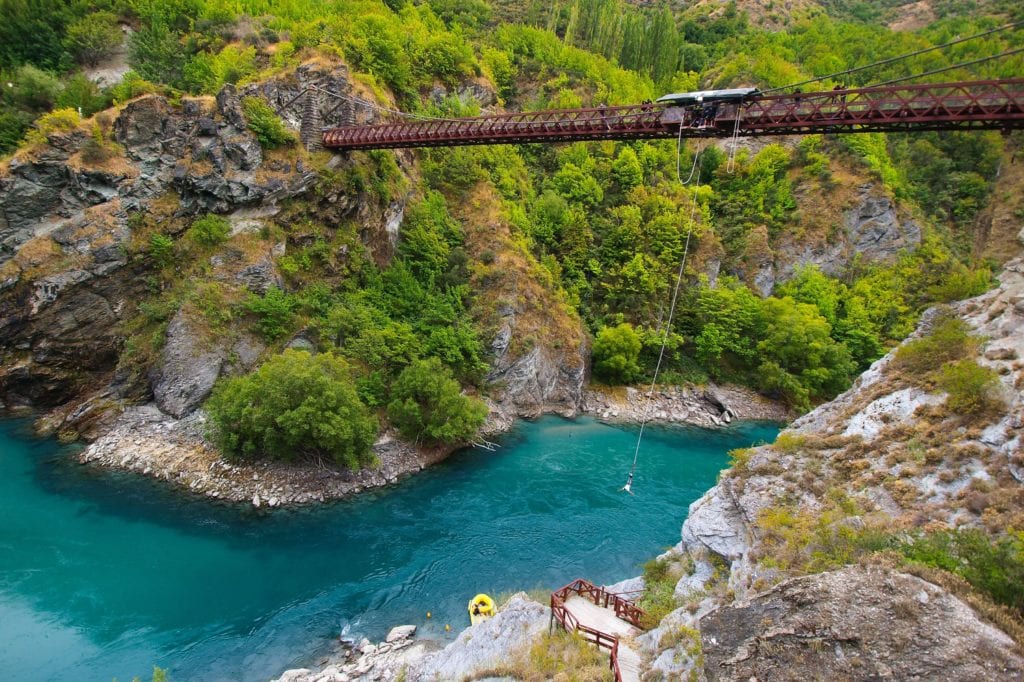
Click here to read about why Queenstown is one of the top South Island destinations for babies/toddlers.
Christchurch
Christchurch has been dealt several blows over the last few years, however the atmosphere is overwhelmingly stoic and optimistic. We kick-started our visit with a stop at the International Antarctic Centre. I was impressed with the interactivity of the centre, where you can watch penguins being fed, embark on a Hagglund field trip, endure an Antarctic blizzard, see live footage of international research stations, and plunge your hand into Antarctic-temperature waters. The stars of the show, however, were undoubtedly the husky puppies we patted outside. I was equally impressed with the Canterbury Museum, which covers New Zealand’s natural history. There is even a Discovery area for kids.
We only spent one day in Christchurch, so I unfortunately can’t speak to the Botanic Gardens, Christchurch Gondola or Cardboard Cathedral. The latter was built as a temporary replacement for the Christchurch Anglican Cathedral after it sustained earthquake damage in 2011. The innovative architecture has become so popular with visitors that it is now permanent.
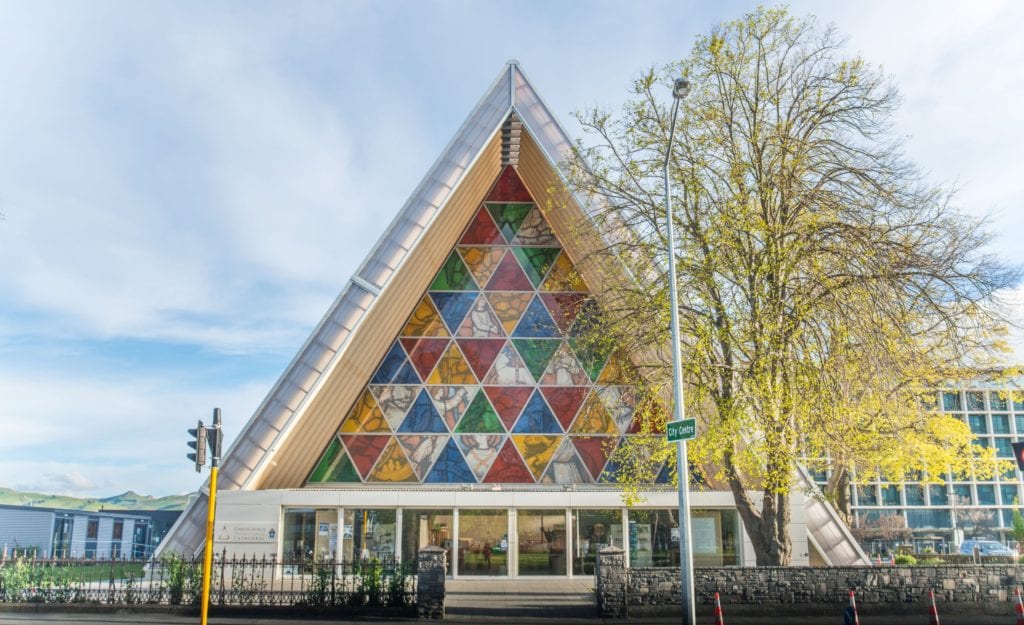
It is worth researching Christchurch’s events calendar before your visit. Our stay coincided quite by accident with the World Buskers Festival. Dad and I had a beer in a courtyard pub while watching a contortionist and a magician perform on a laid-back, family-friendly stage surrounded by beanbags. It made for a lovely afternoon.
Dunedin
My experience of Dunedin was coloured by its art and literature. I spent most of my time there in second-hand book shops. In fact Dunedin, which is named after Edinburgh, is a designated UNESCO City of Literature. A statue of Scottish poet Robert Burns graces the town centre. The Scottish influence, brought by large numbers of Scottish immigrants in the mid 1800s, is also present in the beautiful Presbyterian cathedral and other architecture.
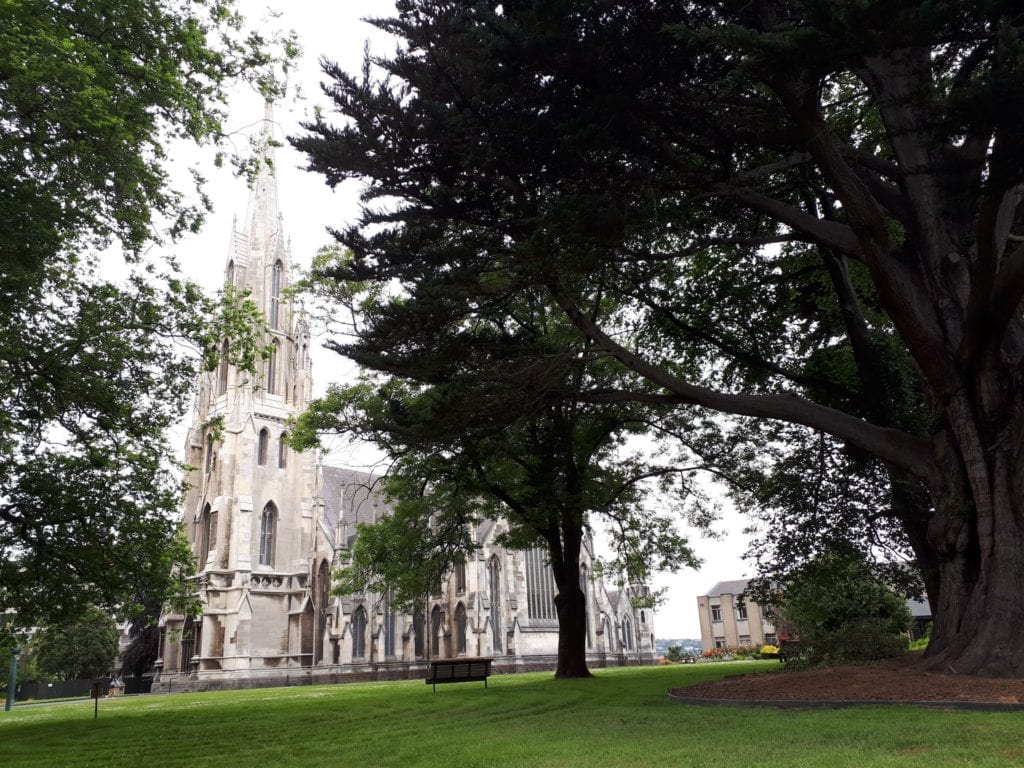
Art-minded teens will love the Public Art Gallery. Otherwise, the lady at the information centre gave us a map for a self-guided street art and graffiti tour, which is a fun and active alternative for the museum-averse. For a great photo-op, test your calf muscles on one of the steepest streets in the world. The Botanic Gardens contained a thriving aviary, with a resident kea, kakapo and even the famous and shy kiwi. Bird-lovers can also venture on a half-day trip to the Royal Albatross Centre.
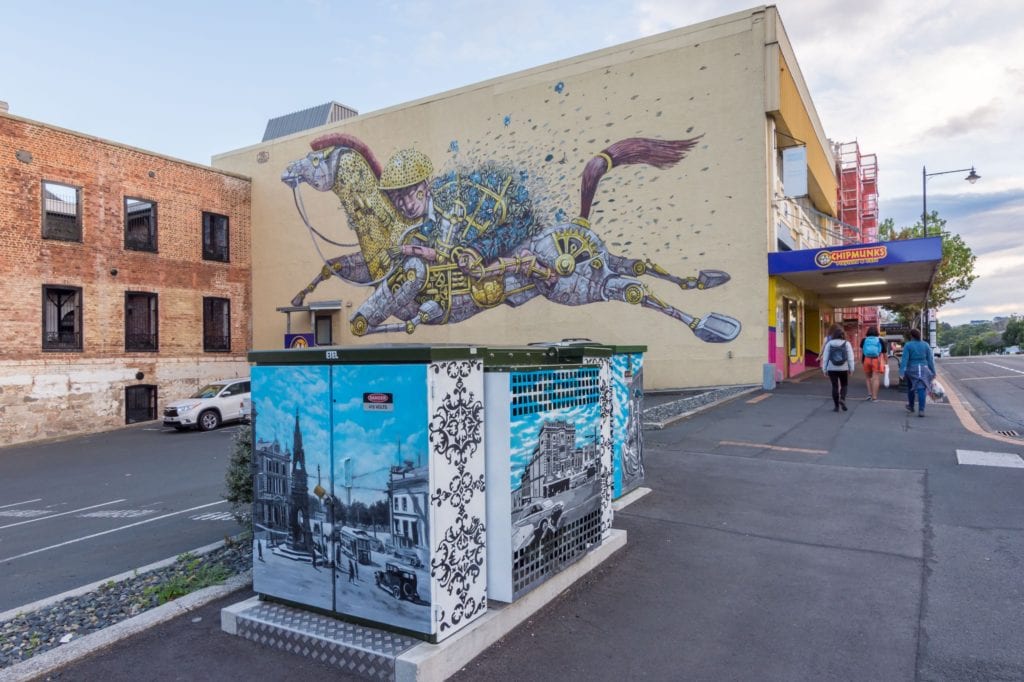
For a taste of history, step back in time with an afternoon tea at Larnach Castle or a visit to the Otago Museum. But my top pick was the Toitu Otago Settlers Museum. Its chronologically themed rooms and engaging displays cover the regional history of whaling, gold rush and beyond.
Hokitika
West Coast town Hokitika has a long gold-mining history. In fact, a 25-minute drive up the coast lies Shantytown Heritage Park, an interactive replica of an 1800s pioneer town. Ride the steam train into the town, then visit the sawmill and foundry before panning for your own flakes of gold. Gold is not the only precious material in the region. Hokitika is famous for pounamu, New Zealand’s jade. You can sometimes find pieces of the green stone on Hokitika Beach, washed in from the rivers. The beach is also covered in driftwood, fashioned into sculptures at Sunset Point. Hokitika Gorge is another must-see and Lake Mahinapua has fun and kid-friendly bike riding trails.
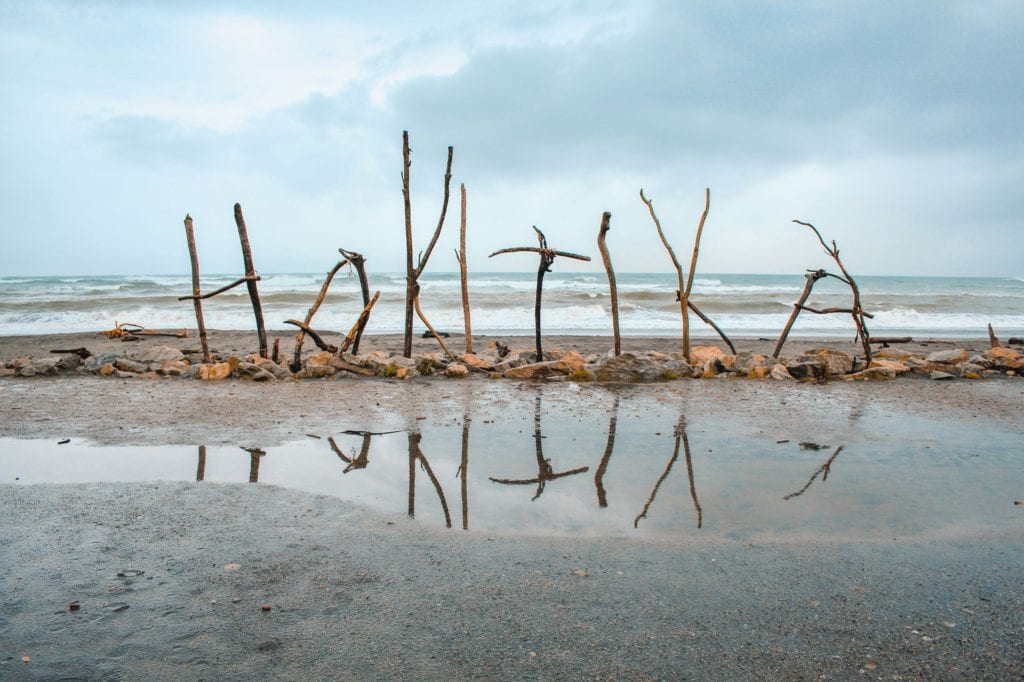
Hot Tips for South Island NZ:
Ok, so there are no snakes. But there are sandflies. The further south we ventured, the worse the onslaught seemed to get. Forewarned is forearmed; keep moving and apply plenty of bug spray because these bitey little critters will make you itch like mad.
If you are exploring by road, you’ll be pleased to know New Zealand is kind to visitors travelling in RVs and campers. There are plenty of sites where freedom camping is permitted. Download apps to show you locations. That’s how we stumbled across my favourite spot of the whole trip, a snug beachside camp on the east coast.
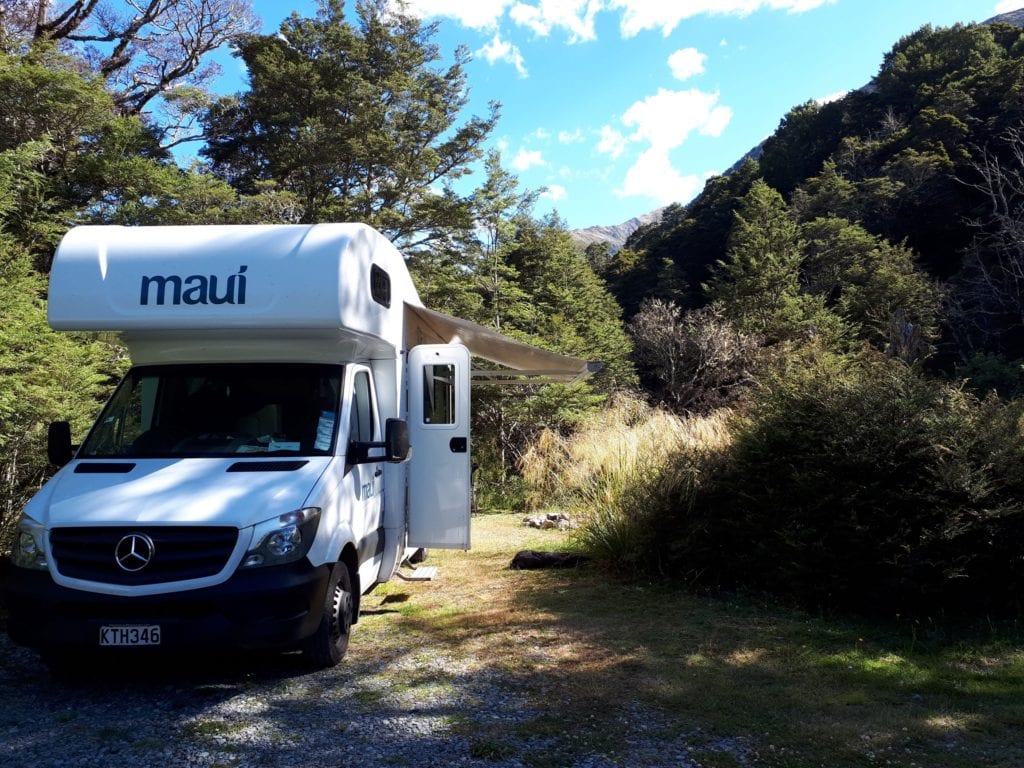
READ MORE:
The best family-friendly hotels in Queenstown
13 New Zealand walks from beginner to advanced
Top family-friendly ski fields in Canterbury, NZ
This is a Family Travel online exclusive story. Make sure you don’t miss any exclusive digital content by subscribing to our email newsletter

